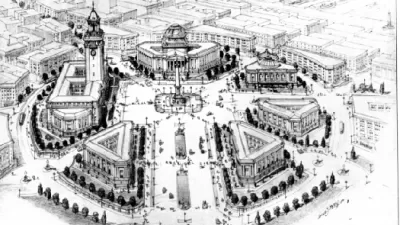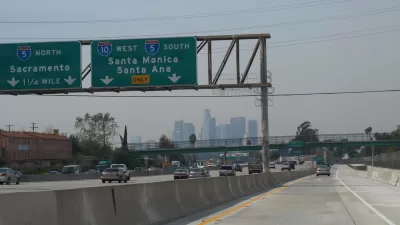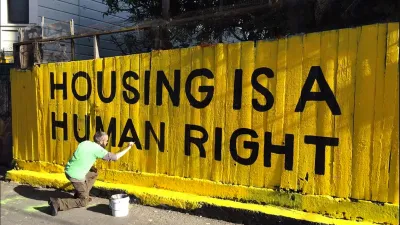Over the next few months, Congress will continue to debate health insurance reform, and in particular, whether to create a "public option"- a government-financed insurance company which would compete with private health insurers. Opponents of the public option fear that the government package might drive private insurers out of business. Are such concerns legitimate? American transportation history may give ammunition to both supporters and opponents of the public option.
Over the next few months, Congress will continue to debate health insurance reform, and in particular, whether to create a "public option"- a government-financed insurance company which would compete with private health insurers. Opponents of the public option fear that the government package might drive private insurers out of business. Are such concerns legitimate? American transportation history may give ammunition to both supporters and opponents of the public option.
A century ago, American urban transportation was far more privatized than it is today. The dominant form of transportation (other than the private horse and foot) was the privately financed streetcar. Streets were often privately financed, and in 1880 most American streets were not paved.
But in the early 20th century, government at all levels decided to facilitate bicycle and automotive transportation through a "public option" of massive street construction. In the first decades of the 20th century, municipal governments paved existing streets; by 1924, nearly all urban streets were paved. In succeeding decades, government at all levels widened those streets to accommodate automobile traffic, and eventually built limited-access expressways to accommodate even more automobile traffic.
By facilitating auto travel to places where public transit was inconvenient, the "public option" of wide public roads reduced transit ridership, eventually making private transit unprofitable. In short, 20th-century American street and road construction was a slow-motion nationalization of transportation: government created a public facility that simply outcompeted its private rival.
Eventually, unprofitable transit companies were themselves taken over by government, creating the modern public transit agencies we know today. But this second "public option", despite its recent growth, has certainly been less successful than the auto-oriented public option of the 20th century.
This is so for a variety of reasons. To name a few:
*the second public option has been less generously funded than the first - not just because government spends more every year on highways than on transit, but also because even if government spent more on transit, it would take decades to make up for the "head start" that the highway industry obtained in the early 20th century (when government spent money on auto-oriented streets but nothing on public transit) and the late 20th century (when government spent more money on highways than on public transit).
*government backed up its first "public option" with government regulation: zoning and planning rules that, by reducing population density and separating housing from other uses, created neighborhoods that would be very expensive to serve with public transit.
*the first "public option" was not exclusively public: while we drive on publicly funded streets, we do so with cars and fuel bought from private industries- industries that can lobby government for money for roads and for government bailouts when times get tough, back up its lobbying with campaign contributions, and glamorize its product with advertising designed to make auto travel seem seductive. By contrast, public transit agencies cannot make campaign contributions- and because the first "public option" made public transit unprofitable, transit agencies have limited resources for advertising and lobbying.
So what does this tell us about health care? That it is simply too early to tell how a public option will affect the private insurance industry. A well-funded public option backed up with supportive government regulation and by support from private industry might well make private insurance less profitable. On the other hand, a poorly funded public option, like today's poorly funded public transit, is no threat to private health insurance.

Study: Maui’s Plan to Convert Vacation Rentals to Long-Term Housing Could Cause Nearly $1 Billion Economic Loss
The plan would reduce visitor accommodation by 25,% resulting in 1,900 jobs lost.

North Texas Transit Leaders Tout Benefits of TOD for Growing Region
At a summit focused on transit-oriented development, policymakers discussed how North Texas’ expanded light rail system can serve as a tool for economic growth.

Using Old Oil and Gas Wells for Green Energy Storage
Penn State researchers have found that repurposing abandoned oil and gas wells for geothermal-assisted compressed-air energy storage can boost efficiency, reduce environmental risks, and support clean energy and job transitions.

Private Donations Propel Early Restoration of Palisades Playground
Los Angeles has secured over $1.3 million in private funding to restore the Pacific Palisades playground months ahead of schedule, creating a modern, accessible space that supports community healing after recent wildfires.

From Blight to Benefit: Early Results From California’s Equitable Cleanup Program
The Equitable Community Revitalization Grant (ECRG) program is reshaping brownfield redevelopment by prioritizing projects in low-income and environmental justice communities, emphasizing equity, transparency, and community benefits.

Planting Relief: Tackling Las Vegas Heat One Tree at a Time
Nevada Plants, a Las Vegas-based nonprofit, is combating the city’s extreme urban heat by giving away trees to residents in underserved neighborhoods, promoting shade, sustainability, and community health.
Urban Design for Planners 1: Software Tools
This six-course series explores essential urban design concepts using open source software and equips planners with the tools they need to participate fully in the urban design process.
Planning for Universal Design
Learn the tools for implementing Universal Design in planning regulations.
Ascent Environmental
Borough of Carlisle
Institute for Housing and Urban Development Studies (IHS)
City of Grandview
Harvard GSD Executive Education
Toledo-Lucas County Plan Commissions
Salt Lake City
NYU Wagner Graduate School of Public Service






























